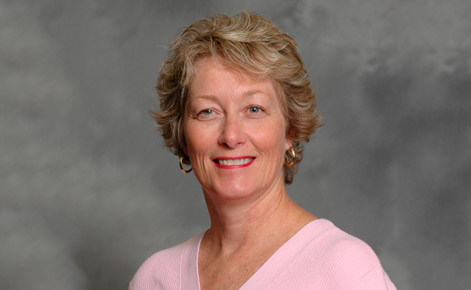
Susan Printy
Earlier this summer, 14 students were the first graduates of the new Doctor of Educational Leadership (DEL) program. The now-Ed.D.’s started their courses in 2012, and spent three years in the hybrid program to obtain their degrees.

David Arsen (far right), along with Marilyn Amey, chairperson of the Department of Educational Administration, and a 2015 graduate of the DEL program.
The DEL program is a cohort model, with all students taking the same courses throughout the programs. Unlike Ph.D. programs, DEL students do not conduct individual dissertation research. Instead, the students work together in small groups in a capstone project, often with a partner organization. Students must also write a “dissertation in practice,” titled because of its applied nature.
“The capstone, while requiring strong inquiry skills, provides students opportunities to draw on their professional networks and access to data,” said Susan Printy, associate professor of K-12 educational administration and coordinator of the program. “The capstone also provides an important opportunity for students to shape a process or a policy. Through these projects, students make an investment in education in Michigan.”
The capstone projects were wide-ranging and in-depth. For example, one group, under the mentorship of associate professor John Yun, researched 23 educational stakeholders and looked at where they could find consensus with policies, how consensus happened and, in other cases, how consensus was prevented. Another group, worked with David Arsen, professor of education policy and K-12 educational administration, and looked at the difference between urban and suburban schools. They compared and contrasted how the districts created different opportunities for students, how resources were spent and how decisions were made.
Printy worked alongside Arsen for several years prior to the program starting. It was in those early years that they decided to move forward with the cohort and capstone model, thinking about the types of students that would be applying to the program: typically those who were already teachers, principals or administrators in their schools looking for the next phase of their career.
“We wanted the students to research what is meaningful to people already in the field,” said Arsen. “We wanted them to develop new research skills while taking advantage of their professional contacts and experiences.”
Capstones instead of dissertations are an emerging trend in higher education, Arsen continued, although there are elements to the capstone project in the DEL program that are similar to that of a dissertation: Each group of wrote both a proposal and final dissertation, which they defended before their dissertation committe.
“The collaborative aspect of the project made all the difference. The groups were comprised of people who wanted to make their project meaningful. They worked extremely hard, and were very professional. I learned things from the groups on how to work collaboratively—the whole experience was very gratifying to me,” Arsen added.
Each group had a different advisor: Alongside Yun and Arsen were associate professors Terah Venzant Chambers and BetsAnn Smith. The advisors suggested an original topic they’d like to work on with students, and the 14 students divided amongst the projects they most wanted to work with. From there, the capstone projects evolved into four distinct groups and areas of research based on discussions and findings.
In the first year, Printy was a member of all the capstone committees.
“The K-12 faculty are so proud of what the students were able to accomplish in this first cohort,” Printy said. “They created high-quality work, engaged differently, asked important questions and ultimately created knowledge that will make a difference in schools.”




